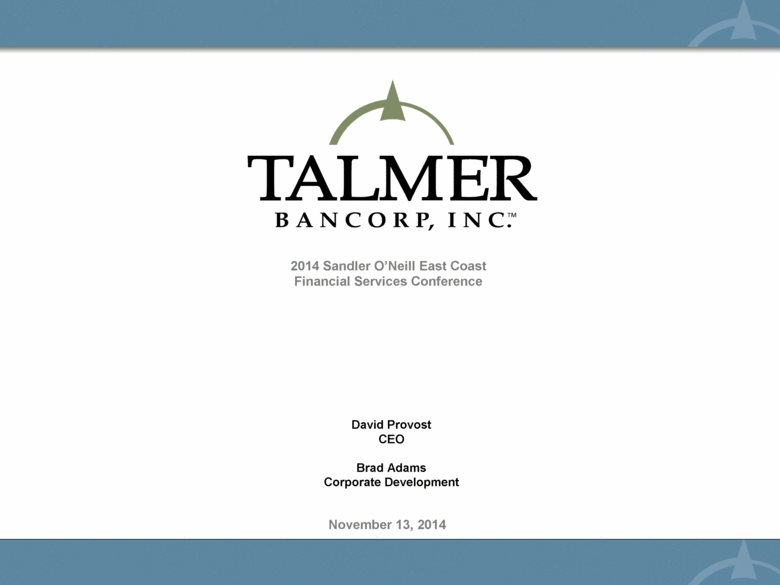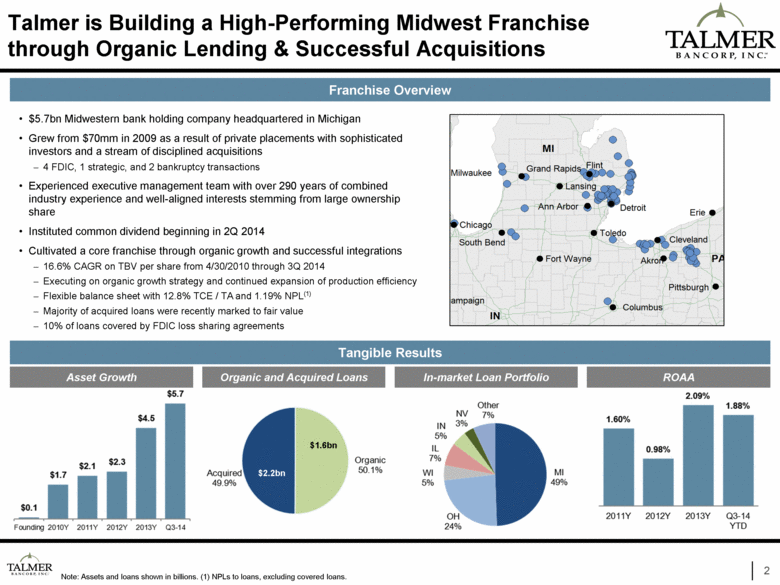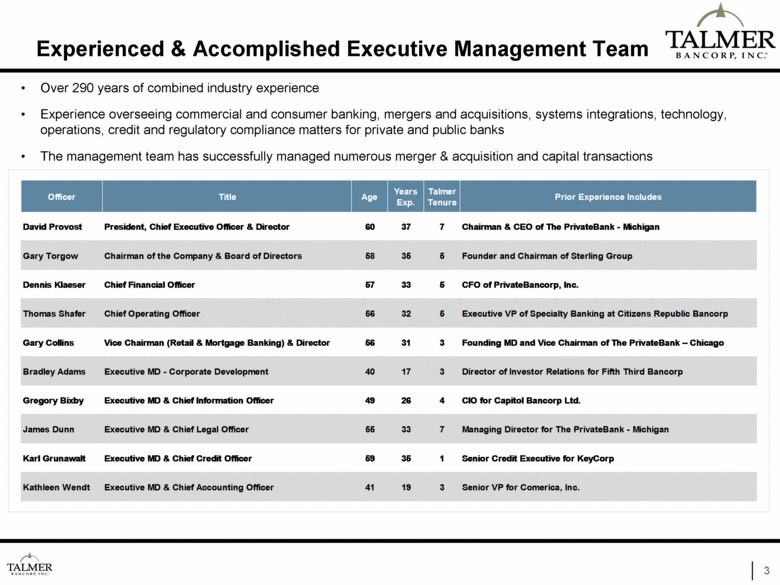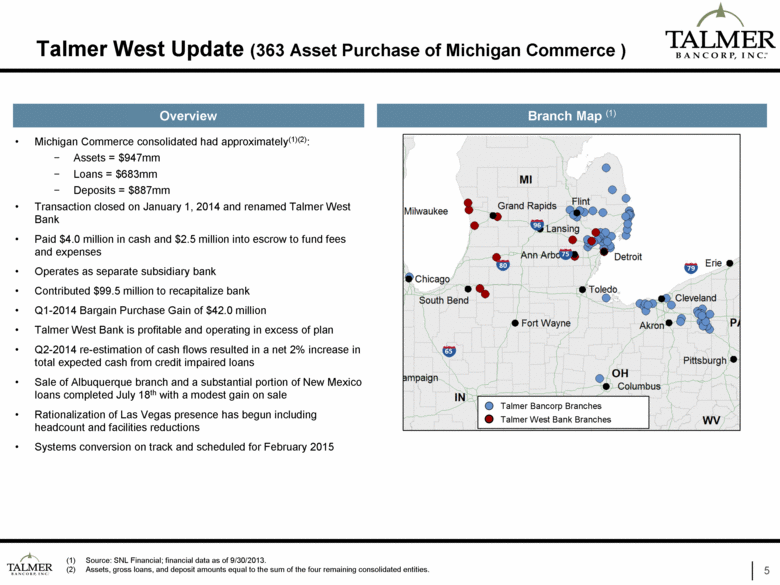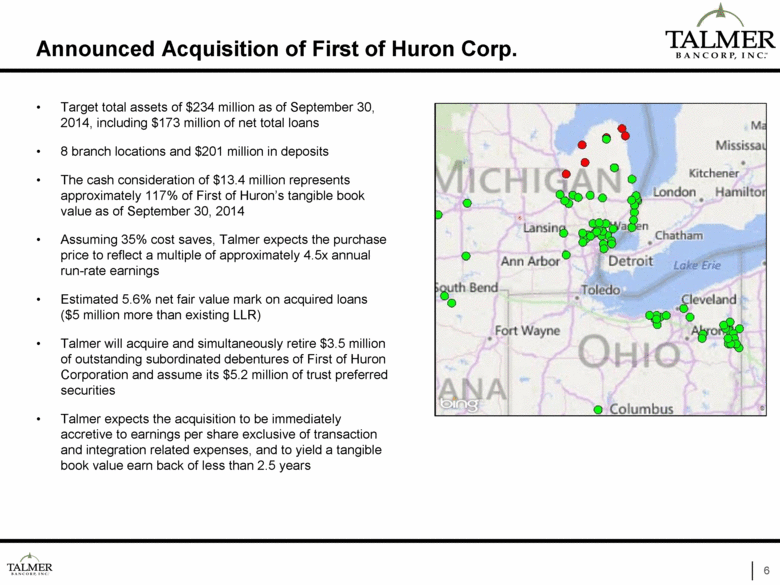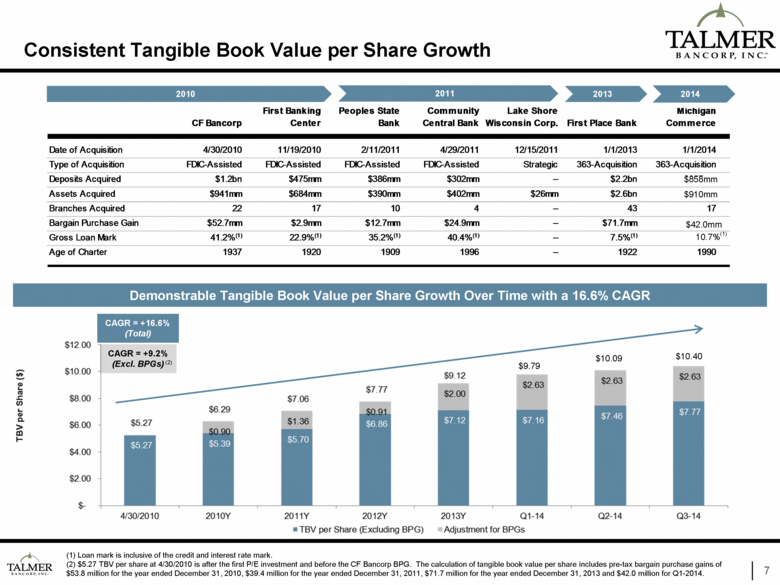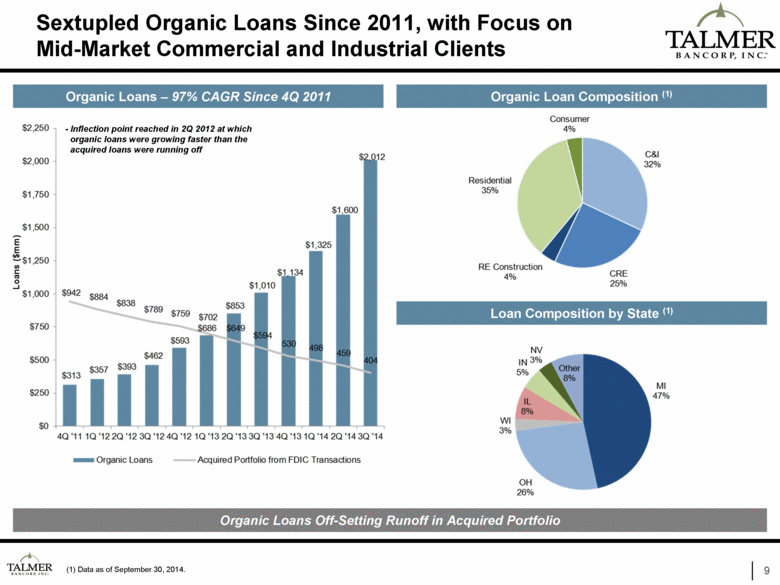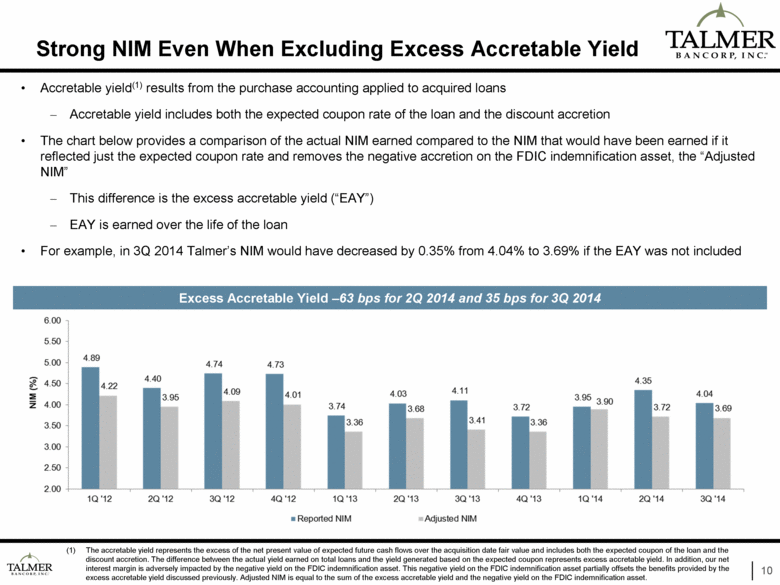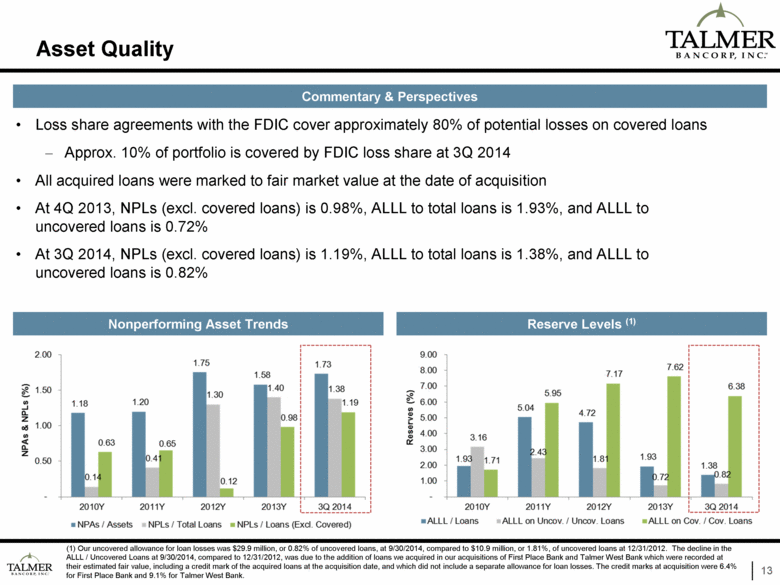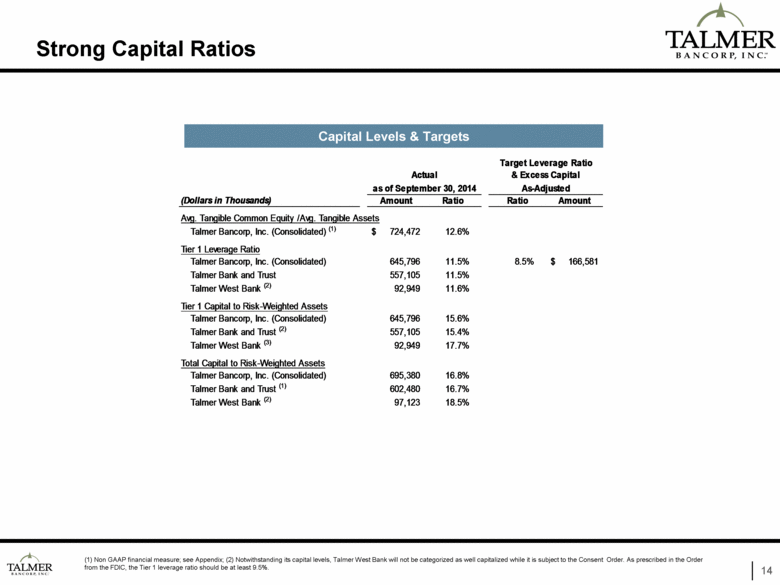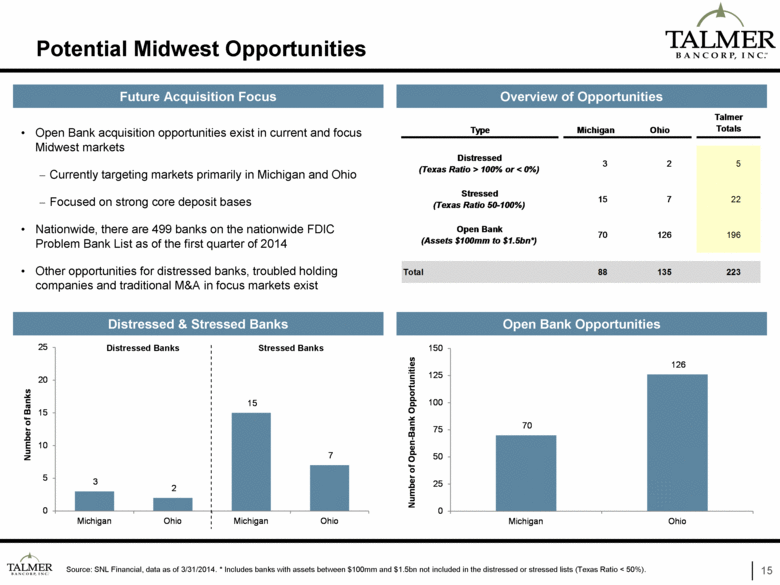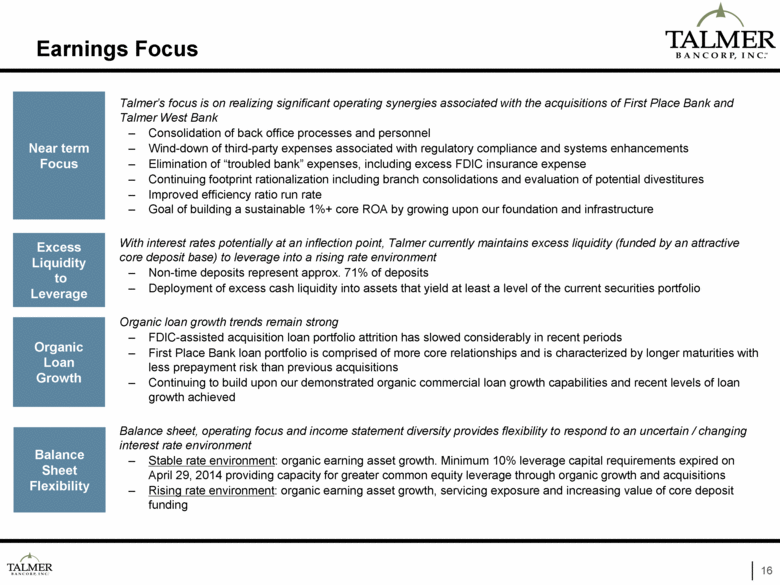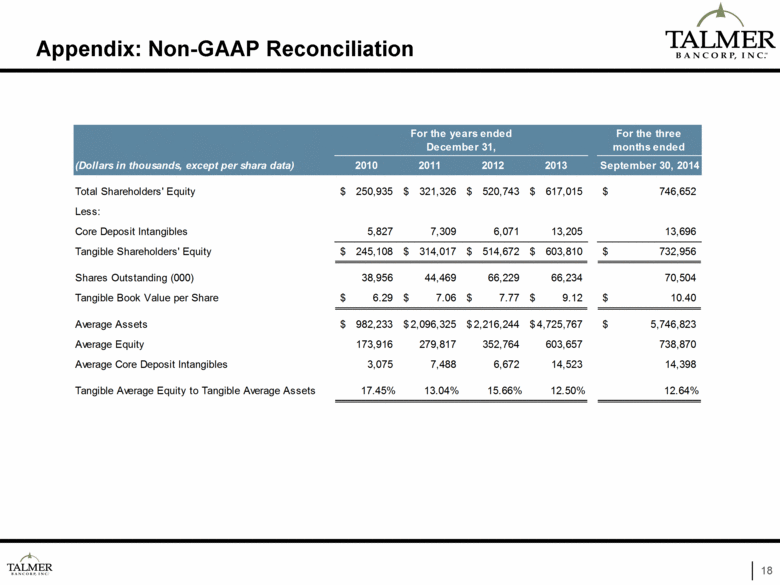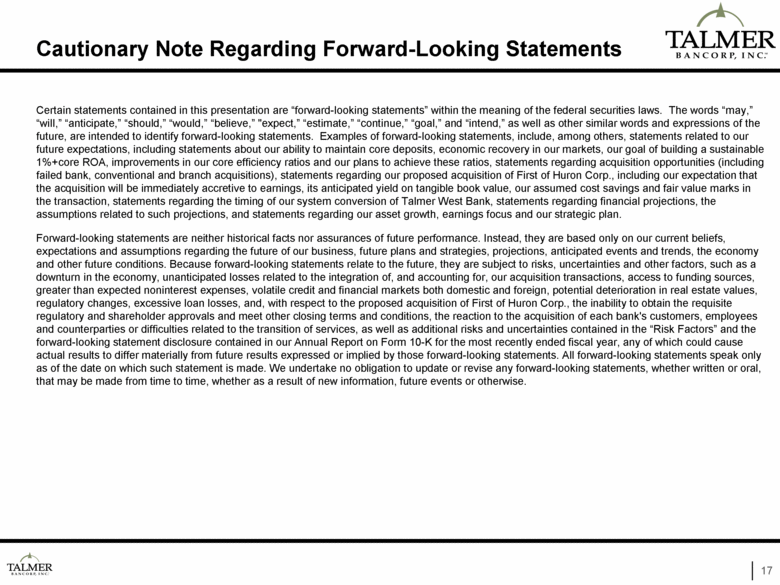
| Certain statements contained in this presentation are “forward-looking statements” within the meaning of the federal securities laws. The words “may,” “will,” “anticipate,” “should,” “would,” “believe,” "expect,” “estimate,” “continue,” “goal,” and “intend,” as well as other similar words and expressions of the future, are intended to identify forward-looking statements. Examples of forward-looking statements, include, among others, statements related to our future expectations, including statements about our ability to maintain core deposits, economic recovery in our markets, our goal of building a sustainable 1%+core ROA, improvements in our core efficiency ratios and our plans to achieve these ratios, statements regarding acquisition opportunities (including failed bank, conventional and branch acquisitions), statements regarding our proposed acquisition of First of Huron Corp., including our expectation that the acquisition will be immediately accretive to earnings, its anticipated yield on tangible book value, our assumed cost savings and fair value marks in the transaction, statements regarding the timing of our system conversion of Talmer West Bank, statements regarding financial projections, the assumptions related to such projections, and statements regarding our asset growth, earnings focus and our strategic plan. Forward-looking statements are neither historical facts nor assurances of future performance. Instead, they are based only on our current beliefs, expectations and assumptions regarding the future of our business, future plans and strategies, projections, anticipated events and trends, the economy and other future conditions. Because forward-looking statements relate to the future, they are subject to risks, uncertainties and other factors, such as a downturn in the economy, unanticipated losses related to the integration of, and accounting for, our acquisition transactions, access to funding sources, greater than expected noninterest expenses, volatile credit and financial markets both domestic and foreign, potential deterioration in real estate values, regulatory changes, excessive loan losses, and, with respect to the proposed acquisition of First of Huron Corp., the inability to obtain the requisite regulatory and shareholder approvals and meet other closing terms and conditions, the reaction to the acquisition of each bank's customers, employees and counterparties or difficulties related to the transition of services, as well as additional risks and uncertainties contained in the “Risk Factors” and the forward-looking statement disclosure contained in our Annual Report on Form 10-K for the most recently ended fiscal year, any of which could cause actual results to differ materially from future results expressed or implied by those forward-looking statements. All forward-looking statements speak only as of the date on which such statement is made. We undertake no obligation to update or revise any forward-looking statements, whether written or oral, that may be made from time to time, whether as a result of new information, future events or otherwise. Cautionary Note Regarding Forward-Looking Statements 17 |
